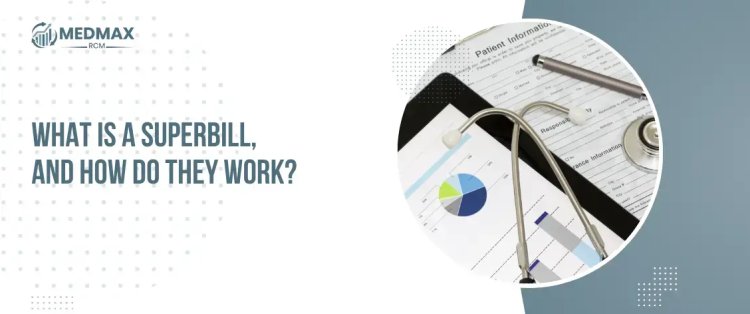What Is a Superbill in Medical Billing? Everything You Need to Know
A superbill in medical billing is a detailed document that records patient services, diagnoses, and codes. It helps healthcare providers create accurate claims for insurance reimbursement, streamlining the billing process.
Share this Post to earn Money ( Upto ₹100 per 1000 Views )

Introduction: In the medical billing process, many crucial documents help ensure healthcare providers are reimbursed accurately for their services. One of the most important documents is the superbill. If you’re working in healthcare, especially in medical billing or practice management, understanding what a superbill is and how it functions can significantly improve your workflow and accuracy.
In this blog, we’ll break down what a superbill is, why it matters, and how it fits into the overall medical billing process.
What Is a Superbill?
A superbill is a primary document used by healthcare providers to record the services they’ve provided to a patient. This document contains all the necessary information needed for billing and insurance claims, including details about the patient, the provider, the services performed, and the corresponding billing codes (like CPT and ICD codes).
Superbills are not submitted directly to insurance companies; instead, they serve as the source document for creating claims, which are then submitted for reimbursement.
Key Components of a Superbill
A well-structured superbill contains the following essential elements:
- Provider Information: This includes the name, address, National Provider Identifier (NPI), and contact details of the healthcare provider or the facility.
- Patient Information: Basic details such as the patient’s name, contact information, date of birth, and insurance information.
- Date of Service: The specific date the patient received care.
- Service Details: Descriptions of the services or treatments provided during the visit.
- CPT and ICD Codes: These are crucial. CPT (Current Procedural Terminology) codes identify the medical procedures or services performed, while ICD (International Classification of Diseases) codes relate to the diagnoses associated with the patient’s condition.
- Fees: The cost of each service provided.
- Provider Signature: Confirmation from the healthcare provider that the services listed were rendered.
This detailed information ensures that claims are accurate and that insurance companies or patients can be billed correctly.
The Role of the Superbill in the Billing Process
In the world of medical billing, the superbill is the starting point for claim submission. Once the provider completes the superbill, it moves through the following steps:
- Service Documentation: After a patient visit, the healthcare provider documents all the services performed on the superbill.
- Claim Creation: The information on the superbill is used to generate a claim in the billing system. This claim includes all the necessary details for insurance companies to process the payment.
- Claim Submission: The claim is then submitted to the patient’s insurance company for review.
- Payment and Billing: Once the insurance company processes the claim and pays the provider, any remaining balance is billed to the patient.
Superbills are essential for accurate claim creation, which is why maintaining precise and complete documentation is critical for providers.
Why Are Superbills Important for Healthcare Providers?
Superbills play a significant role in the efficiency of a healthcare practice’s revenue cycle. Here are a few reasons why superbills are crucial:
- Accuracy in Claims: With detailed information on services provided, superbills help prevent errors in claims, reducing the chances of denied or delayed payments.
- Streamlined Workflow: Superbills simplify the process of transferring information from patient care to billing, helping practices save time and work more efficiently.
- Improved Financial Management: Accurate superbills ensure that providers are reimbursed appropriately for the services they offer, contributing to better financial health for the practice.
For small practices, in particular, superbills offer a practical and straightforward method for managing the medical billing process without the need for complicated systems.
Conclusion
In summary, the superbill is a critical tool in medical billing, linking patient care to financial reimbursement. It contains detailed information about the services provided, the costs involved, and the necessary coding that allows claims to be submitted accurately. Whether you’re managing a small practice or a large healthcare organization, mastering the use of superbills can improve efficiency, reduce errors, and help maintain a healthy cash flow.
Understanding the role and function of superbills is key to streamlining your medical billing process and ensuring that your practice gets paid for the services it provides.














